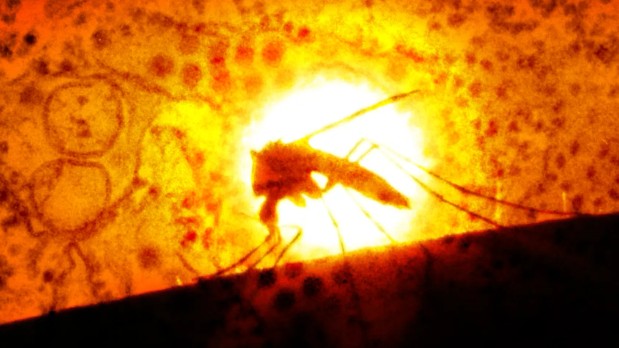Mexico deploys rescue dogs to fight flesh-eating parasites threatening cattle industry
08/14/2025 / By Ava Grace

- The New World screwworm, an invasive fly, lays eggs in livestock wounds, with larvae consuming flesh. Its northward spread from South America risks devastating the U.S. beef industry, already impacted by bird flu.
- Mexico’s Senasica trains rescue dogs at Ceacan to sniff out screwworm infestations in livestock. High-energy dogs undergo rigorous three-month training, with top performers deployed to high-risk zones like the Chiapas-Guatemala border.
- The U.S. combats screwworms by sterilizing male flies in Texas, while Mexico’s detection dogs provide early warning. A joint $21 million sterile fly facility in Mexico aims to release 100 million sterilized flies annually.
- If screwworms reach U.S. herds, treatment costs and trade restrictions could spike meat prices, compounding existing pressures from disease and inflation.
- Mexico’s sniffer dogs offer a cost-effective, humane solution, but ongoing vigilance is critical as cases rise in southern Mexico. The effort highlights agriculture’s vulnerability to emerging biological threats.
Mexico has deployed an unconventional but highly effective weapon in the fight against a deadly parasite threatening livestock: rescue dogs trained to sniff out the New World screwworm.
This invasive fly lays eggs in open wounds on cattle, and its larvae burrow into flesh, consuming the animal from the inside out. It has been spreading northward from South America, posing a serious risk to the U.S. beef industry.
To combat this threat, Mexico’s agricultural health agency, Senasica, has launched a specialized canine detection program at its Ceacan training center. Rescue dogs undergo rigorous three-month training to identify screwworm infestations in livestock and agricultural products. The initiative is part of a broader U.S.-Mexico effort to prevent the parasite from crossing into Texas, where an $8.5 million sterile fly facility is already operational. (Related: New World Screwworm threat looms at southern border, livestock imports suspended.)
A parasite that could devastate American cattle
The New World screwworm (Cochliomyia hominivorax) is no ordinary pest. Unlike common flies, this species targets living tissue, laying eggs in open wounds on cattle, deer and even humans. Once hatched, the larvae tunnel into the flesh, causing severe infections that can be fatal if untreated.
Colin Woodall, CEO of the National Cattlemen’s Beef Association, warns that the screwworm could cripple the beef industry if it spreads unchecked. With cattle prices already under pressure from disease and inflation, another biological threat could devastate ranchers and consumers alike.
Dogs are being trained to sniff out disaster
At Ceacan, trainers select rescue dogs with high energy and strong scent detection abilities — qualities often deemed problematic in household pets. These dogs are exposed to screwworm odors in controlled environments, including greenhouses simulating the extreme heat of infestation zones.
Not every dog makes the cut. Those that fail detection tests are adopted out, while the best performers are deployed to high-risk areas like the Chiapas-Guatemala border, where screwworm cases are rampant. Once certified, these dogs work for up to eight years or until age 10, forming deep bonds with their handlers.
U.S. and Mexico’s joint defense strategy
While Mexico relies on canine detection, the U.S. is taking a different approach: sterilizing male screwworm flies. A facility in Edinburg, Texas, irradiates male flies before releasing them into the wild. When these sterile males mate with females, the eggs fail to hatch, gradually reducing the population.
The U.S. has also invested $21 million in a Mexican sterile fly production plant, set to release up to 100 million sterilized flies annually. Combined with the sniffer dogs, this multi-pronged strategy aims to halt the parasite’s northward march.
Why this fight matters for American consumers
If the screwworm reaches U.S. herds, the economic fallout could be severe. Infected cattle require costly medical treatment, and widespread outbreaks could lead to trade restrictions, driving up meat prices. Given the recent disruptions from avian flu, the agriculture sector cannot afford another crisis.
Mexico’s innovative use of detection dogs offers a cost-effective and humane solution. But the battle is far from over. With cases still rising in southern Mexico, vigilance on both sides of the border remains critical.
The screwworm threat underscores the fragile state of modern agriculture. From bird flu to invasive parasites, farmers and ranchers face mounting challenges that demand swift, creative responses. Mexico’s sniffer dog program is a testament to ingenuity in crisis — proving once again that man’s best friend may also be the cattle industry’s greatest ally.
Watch and learn about common signs and symptoms of parasites.
This video is from the Sun Fruit Dan channel on Brighteon.com.
More related stories:
New World screwworm: The deadly flesh-eating parasite spreading throughout Central America.
Powerful herbs that treat parasite infections.
U.S. launches sterile fly “factory” in battle against flesh-eating pest threatening livestock.
New study reveals that the malaria parasite can infect you as deep as your bone marrow.
Top 4 ways you can get a parasite infection.
Sources include:
Submit a correction >>
Tagged Under:
agriculture, avian flu, beef industry, big government, cattle industry, Ecology, environment, food supply, livestock, Mexico, national security, New World screwworm, parasites, pests, progress, rescue dogs, screwworm flies, Texas
This article may contain statements that reflect the opinion of the author





















